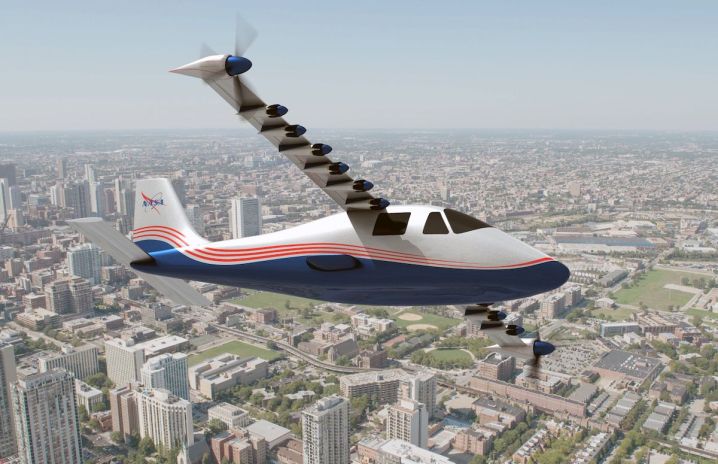
NASA has taken delivery of its all-electric X-57 “Maxwell” aircraft, taking the agency a step closer to comprehensive testing of its first all-electric experimental aircraft.
Several years in development, the X-57 was delivered by Empirical Systems Aerospace of San Luis Obispo, California, in the first of three configurations as an all-electric aircraft, known as Modification II, or Mod II.
Tom Rigney, manager of the X-57 project, said the arrival of the aircraft marked “the beginning of a new phase in this exciting electric X-plane project,” adding, “With the aircraft in our possession, the X-57 team will soon conduct extensive ground testing of the integrated electric propulsion system … We plan to rapidly share valuable lessons learned along the way as we progress toward flight testing, helping to inform the growing electric aircraft market.”
The first all-electric configuration of NASA’s X-57 Maxwell is here!
•
The X-57, NASA’s first all-electric experimental aircraft is the first crewed X-plane in two decades!
•
To find out more about the X-57 visit : https://t.co/ylNifJq2MP
• pic.twitter.com/U0XFN7q2Sz— NASA Armstrong (@NASAArmstrong) October 6, 2019
The X-57’s Mod II vehicle uses a four-seat Tecnam P2006T aircraft as its base design but with its traditional combustion engines replaced with 14 electric cruise motors. The design will allow it to operate with 20% of the fuel cost — and far more quietly — than conventional aircraft.
When the X-57 is ready to take to the skies following its initial tests, six motors on each wing will enable take-off and landing. However, two larger motors — one at the far end of each wing — will be enough for the X-57 to maintain its cruising speed of 175 mph. The range of the aircraft is around 100 miles.
According to NASA, one of the goals of the X-57 project is “to help develop certification standards for emerging electric aircraft markets, including urban air mobility vehicles, which also rely on complex distributed electric propulsion systems.”
Indeed, a growing number of companies are investing big bucks in the development of small, electric aircraft as a way to move people around cities more efficiently while at the same time reducing carbon emissions.
NASA has been testing its experimental X-planes and rockets since the mid-1940s as a way to evaluate new technologies and aerodynamic concepts.
The X-57 aircraft was nicknamed Maxwell in honor of James Clerk Maxwell, a 19th-century Scottish physicist known for his groundbreaking work in electromagnetism.


